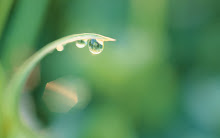In reviewing the uses of blogs in education, my article identified five main categories of use:
(1)Teachers use blogs to post class times, assignment notifications, suggested readings, excercises. (2)Instructors link to the Internet through blogs to post online resources that relate to their course ie. Rich Effland, from Mesa Community College, maintains a blog to pass along links and comments about topics in archaeology. Effland writes, what are in essence, short essays specifically directed toward his students. (3)Blogs are often used to organize in-class discussions. Students are also encouraged to visit and blog on other students' blogs to create a community of learners. This allows students who may not be as vocal in a classroom setting to voice his or her opinion with more ease in a cyber setting. (4)Instructors use blogs to organize class seminars and provide summaries of readings. These blogs can become group blogs---that is, an individual blog authored by a group of students. (5)Students can be asked to create and blog as a component of their class grade. Technologist Lane Dunlop wrote about one class at Cornell: "Each day, the students read a chunk of a book and post two parragraphs on their thoughts on the reading." This is a journal-type application of a blog.
Other educational uses of blogs might include: reflections on your teaching experience; log of teaching-training experiences; descriptions of what worked in the classroom and what didn't;
explanation of teaching insights- what you learned from another teacher; the sharing of ideas for teaching tasks or games for classroom use; commenting on important teaching and learning issues; student-created 'portfolio' blogs of their work; communication with parents of students;
a forum for providing samples of exemplary student work; the display of internet resources for a specific course; providing links to pertinent sites and annotating what is relevant about those sites; publishing examples of good student writing; showcasing student art, poetry, creative stories; organizing a literature group/online book club; building a class newsletter; linking your class with another class somewhere else in the world; completing a webquest.
Although this is not an exhaustive list, it is lengthy! Something that I can add? Maybe enlarge on the idea of posting student artwork by actually having the student create an art gallery blog of his or her body of work for the semester; create your own 'listening gallery' that could include music that the student has composed or performed; use a blog to maintain an ongoing evaluation conversation between the student and instructor, detailing progress on a particular project; using a blog to post class news updates/photos; posting creative insights or inventions...etc.,etc., etc.! Of course, the educational usese of blogs can also include religious education and thoughts!
Subscribe to:
Post Comments (Atom)
URLs for Tools Class:
Social Object:
http://confusedofcalcutta.com/2008/02/16/musing-about-social-objects-mollluscs-that-matter/
Educational Uses of Blogs: http://www.pembinatrails.ca/program/technology/uses_of_blogs...
Social Networks and Education :
http://www.sciencedaily.com/releases/2008/06/080620133907.htmlhttp://delicious.com/lindabradford
http://www.flickr.com/photos/ha112/234233755/http://www.slideshare.net/heyjudeonline/creative-web-20-learning?from=email&type=share_slideshow&subtype=slideshow
Annotation: http://lelutes.wordpress.com/
Podcast: http://web.mac.com/lindabradford2002

No comments:
Post a Comment